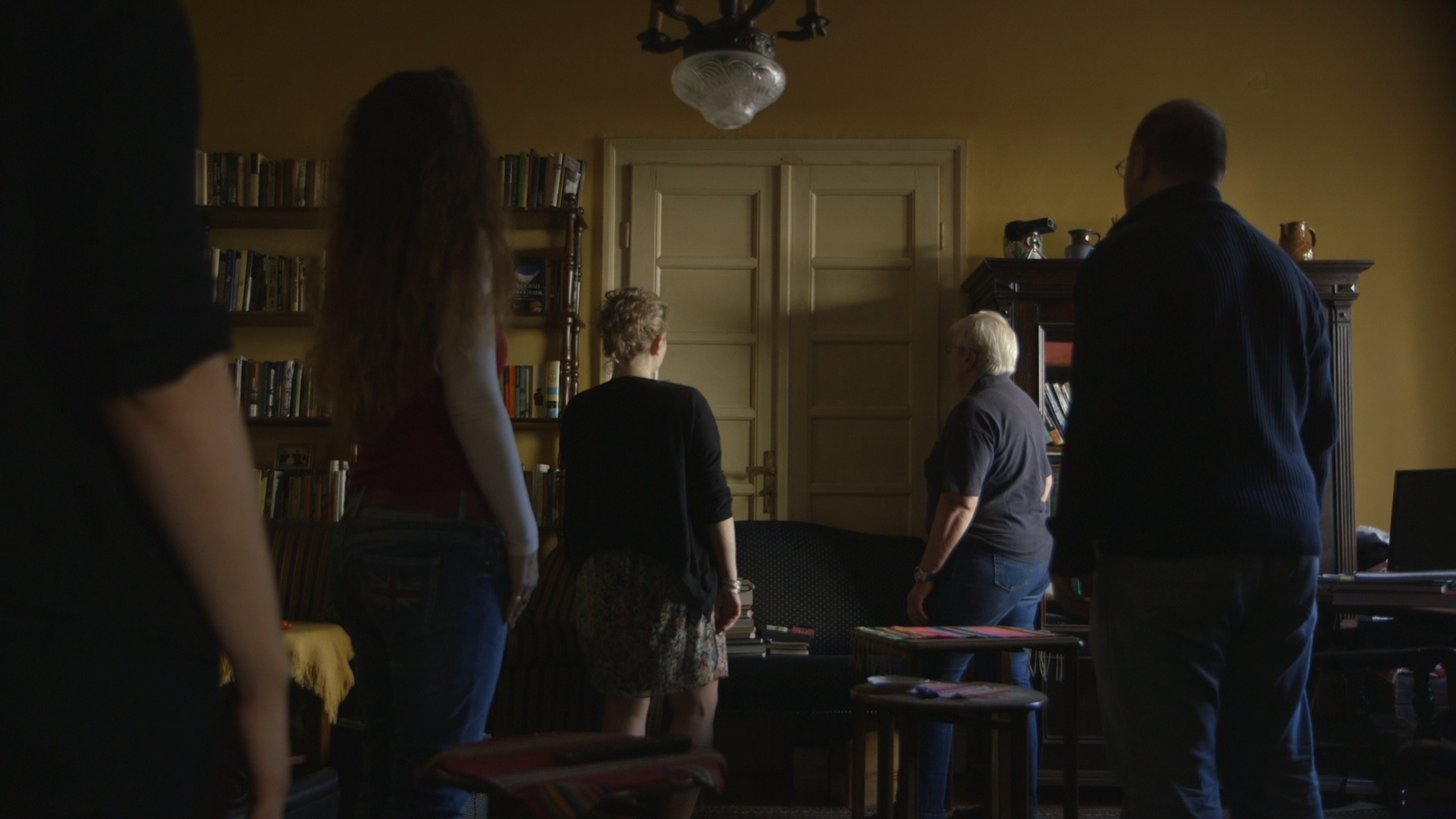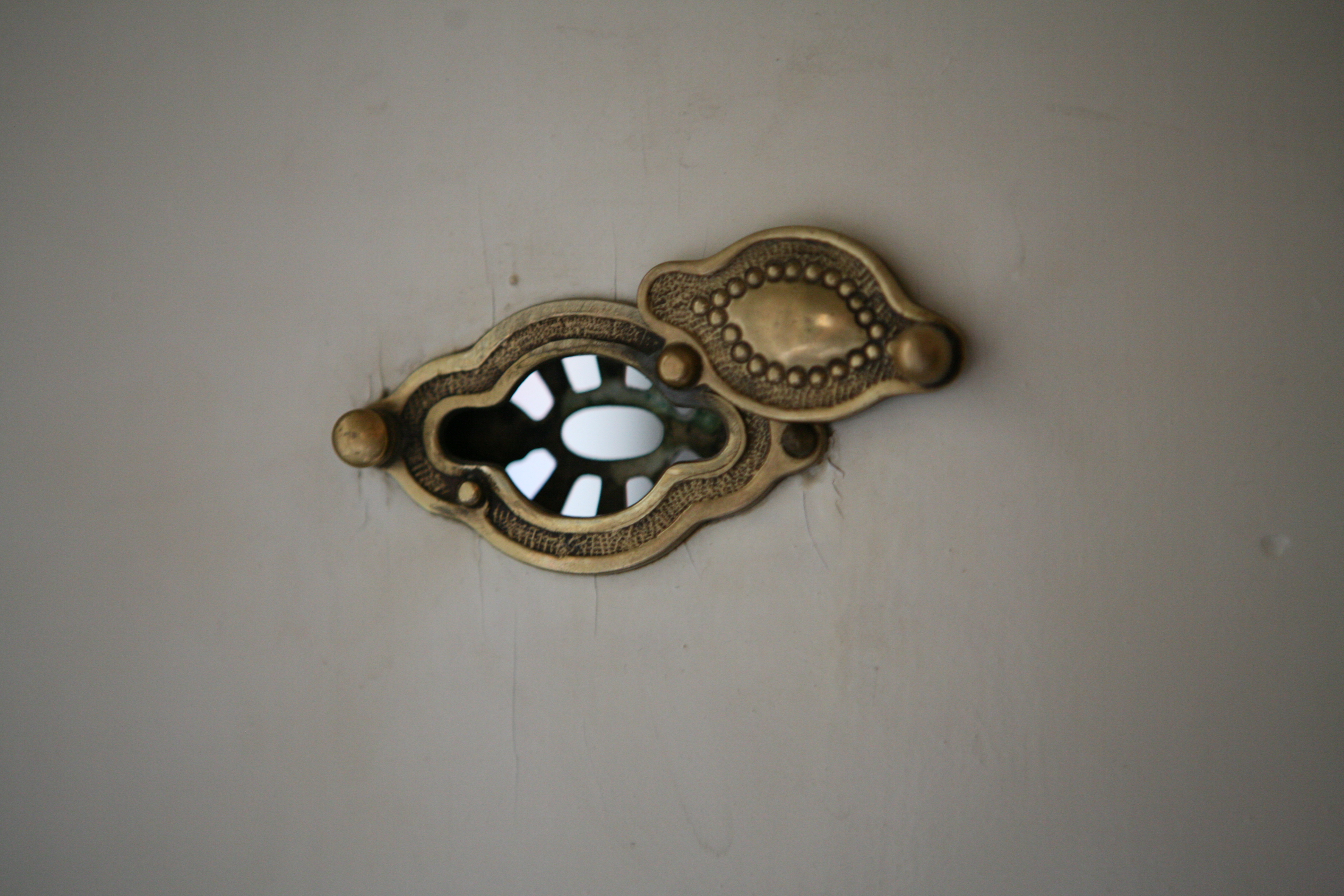The Other Side of Everything - Doors // Verzio X ELTE

Watching Mila Turajlic’s The Other Side of Everything, one feels that the filmmaker was acutely aware of this quality, as she uses it to weave an almost century-old story, continuously challenging our idea of what a simple pair of doors can mean when pulled through a turmoil of social contexts and events – all of which keenly observed, presented, and largely witnessed, by her mother and main “character” in the film, a well-renowned Serbian professor and public intellectual, Srbijanka Turajlic.
At the film’s opening, we are introduced to an old Belgrade apartment built in the aftermath of World War I. The apartment, we learn, as well as the building in which it is, was commissioned by Mila Turajlic’s great-great grandfather – one of the signees of the declaration for the formation of the Kingdom of Serbians, Croatians, and Slovenians in 1918. Situated in downtown Belgrade, with its high ceilings, ornamental chandeliers, decorative window hooks, and custom-made cutlery (none of which escapes the eye of the camera), the apartment is like a showcase of what the post-WWII socialist government was quick to refer to as the “living quarters of the bourgeoisie”. This sets the ball rolling in terms of the film’s narrative, as we learn that the communist government, during the period of so-called “nationalization” in 1947, forcefully closed off a part of the family’s household so that another family can move into it. More precisely, it is at this moment that we learn the said doors haven’t been opened since the day they were closed – 68 years before the scenes we are watching have been filmed. Here is where Srbijanka’s story begins – a story of a lifetime that has been directly affected, in one way or another, by every national socio-political event of the second part of the twentieth century.

photo: The Other Side Of Everything
The film takes us on a chronological journey through Srbijanka’s life, starting with her thoughts on the Socialist Federative Republic of Yugoslavia and her disdain for its communist regime. This not only stems from the afore-noted family history, but also from Srbijanka’s inherently democratic views, as personified (i.e.) by her involvement in the student protests in 1968. In her own words, these protests made her feel like she was a part of something that had the genuine potential to change the world, and the viewer is free to interpret that the combination of the two factors was the seed of her life-long involvement in political activism. Such thoughts become increasingly obvious when the film takes us through the events surrounding the rule of Slobodan Milosevic in the 1990’s and the role that the intellectuals of the time had (or didn’t have) in speaking their mind and aiding the opposition. Clearly one of the select few who were brave enough to speak out, Srbijanka was heavily involved in rallying her students and registering official protests, often being featured as one of the key speakers in them. The film shows us the price she had to pay for this, some examples of which include – although an internationally renowned expert in her field (electro-engineering) – she was fired from her teaching position in 1999; her apartment was under video and audio surveillance for years; and, she had life-long friendships broken up with her. Nevertheless, when reminiscing about these past experiences and traumas, Srbijanka remains confident that if she ever had the opportunity, she would have behaved the same exact way, as she found it to be – in her own words – her professorial duty to stay on the side of the young people who were to “inherit the future”, and a hopefully a better one at that.
This note perhaps serves as the most telling one when it comes to the abstract relationship between Srbijanka and her apartment – the two main subjects of the documentary, and this is because what seems to be the overarching issue that permeates throughout Srbijanka’s life is the issue of political/national fluctuations across time. In other words, she was born and spent the largest part of her life in the Socialist Federative Republic of Yugoslavia, then lived through that country’s break-up in 1991 and the ensuing formation of the Republic of Yugoslavia and its leader Slobodan Milosevic – whose ultimate downfall she contributed to in the events leading up to the October 5threvolution in 2000 – only to, in the aftermath, become a resident of the Republic of Serbia (the country’s current name and form). What seems extraordinary once all of this is taken into consideration, is the fact that throughout this entire time Srbijanka occupied the same physical space on the same address (it comes as no surprise when in the census-filling scene she responds to a question regarding her nationality as “I choose not to answer”) – something that was doubtlessly on her daughter’s mind in conceptualizing the film.

photo: The Other Side of Everything
It is here that, in my view, the subject of the pair of doors in Srbijanka’s apartment comes to life as a metaphor. Here we have a person who has spent the entirety of her adult life openly advocating and working towards a better future, and with nothing but that same future in her sight, all the while treating her past – the most (implicitly) formative aspect of it being the childhood event where the apartment was closed off – as something that one should dedicate no time to. In this sense, the doors being unopened during the same period of time work towards embodying the intentional lack of access – stemming from her ability to have control over it – to this same past.
Just before the film’s conclusion, we see Srbijanka’s face in a close-up, as her daughter asks her to comment on how many of her goals she considers she has achieved. Srbijanka replies that the problem with revolutions are not revolutions themselves and whether they happen, but what follows them immediately afterwards, and that speaking from that perspective she isn’t sure that any success has been made whatsoever, especially considering the contemporary state of affairs in Serbia in 2015. This is followed by her daughter’s question whether she plans on doing anything about it. Srbijanka replies it is no longer up to her to fight; she has done her fair share of it, it is now finally the time for younger generations to fight for what they consider to be right. Srbijanka’s activism and commitment to fighting for the future is essentially over.
These words and this sentiment bring us to the film’s conclusion, where now that the future seems to have brought none of the expected and worked-for betterings, and the end of her life is near, it is finally time to look at the other side of the doors. Srbijanka, along with her family and friends, opens the doors for the first time since 1947. We then see her make the first steps into this part of the apartment, as she walks across the rooms and looks around. What seems to catch her eye more than anything else are the chandeliers still hanging from the ceiling. If she could wipe some dust off of them, she says, she think she could figure out whether they’re her family’s. She then becomes static, with her gaze still fixated on the chandeliers, as if they have could illuminate these long-forgotten years for her. Or if you will, as if the answers and lessons to all of our problems and crises might not, after all, have a cure in the future, but in the past.
Savo Bojovic
student of ELTE Department of Film Studies